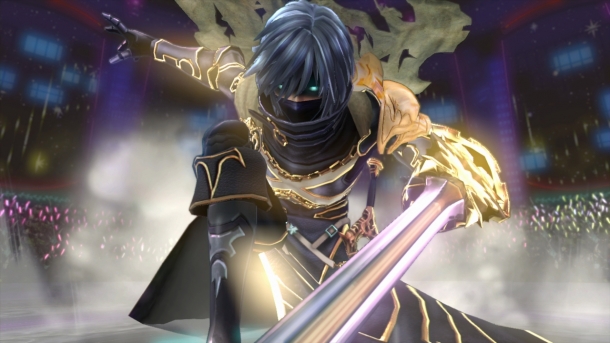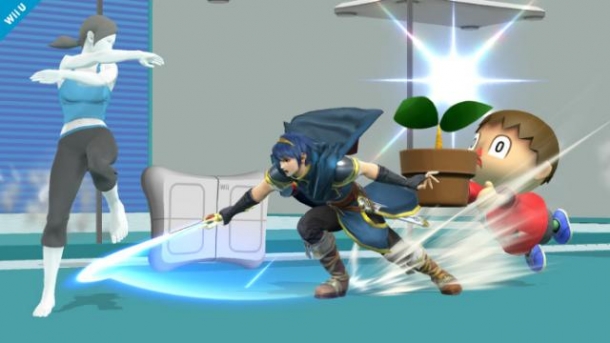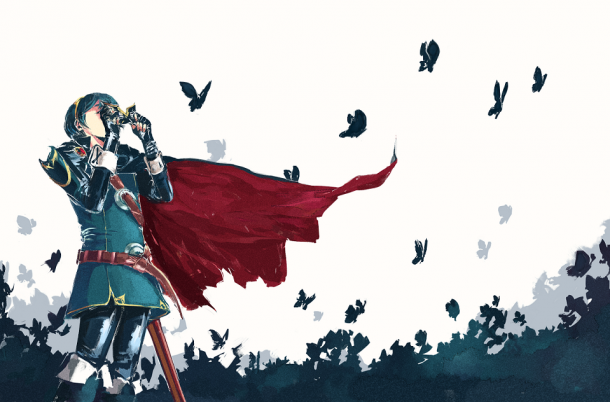Fire Emblem dates back to 1990, when Fire Emblem: Ankoku Ryu to Hikari no Tsurugi, was released for the Family Computer in Japan. The game was simple as was the way of the time, and followed the journey of Prince Marth to save first his country, then his world, from the evil warlock Gharnef. Two years later, Fire Emblem Gaiden was released for the same system. Gaiden introduced several new features, including a world map, RPG-like towns, non-human monster enemies, and a new location, following the young fighter Alm in his adventures on the continent of Valentia.
In 1994, with the rise of the SUper Famicon, the original Fire Emblem was given a remake and sequel in Fire Emblem: Monshou no Nazo. This game involved two "Books," the first an updated rerelease of Ankoku Ryu to Hikari no Tsurugi, the second a sequel telling Marth's adventures years after the fight with Gharnef. This game was popular enough to merit a small anime series, and the continuation fo the franchise on the Super Famicon.
Two years later, Nintendo would deviate from its formula again with the release of Fire Emblem: Seisen no Keifu, or Genealogy of the Holy War. This game was a marked departure from previous games, featuring an epic and dark storyline told over the course of two generations, and layed over maps more massive than anything else in the franchise. This game was also the first to implement skills and the Lover system, which ggave paired Lover units advantages in combat, and influenced their children in the second generation. A few years later, Genealogy would recieve its own gaiden, Fire Emblem: Thracia 776, a short game telling the story of a minor protagonist from Seisen no Keifu, that became infamous for its incredible diffculty.
As the handheld began to rise, Fire Emblem changed systems to the Gameboy Advanced with the release of Fire Emblem: Fuuin no Tsurugi. Set in the new continent of Elibe, this game would establish many of the staple sof modern Fiire Emblem games, including the support system. Based off of the Lover system, this allowed units to be paired and have conversations elaborating on their backstories and giving bonuses while the paired units were near each other. Elibe would appear again a couple years later in Fire Emblem, also called Rekka no Ken or Blazing Sword. Also for the GBA, this game polished many of the features introduced in Fuuin no Tsurugi, and also marked the first time a Fire Emblem game was released in the West.
Fire Emblem was enough of a hit in the West that within a year, a new Fire Emblem game was marked for translation, Fire Emblem: The Sacred Stones. Taking place on the new continent of Magvel, Sacred Stones was considered a spiritual succesor to Gaiden, making a large departure from the norms of the previous GBA games, including the introduction of branching promotions, a world map, monsters, and a post-game Creature Campaign bonus mode.
A year later, Fire Emblem would make its triumphant return to the consolde, with Fire Emblem: Path of Radiance being released for the Gamecude in 2005, and it's sequel, Fire Emblem: Radiant Dawn, being released for the Wii in 2007. These games upped the scale to massive conflicts, introducing a complex plot involving politics, religion and racism, a large departure from the plots of the GBA games. Despite significant graphics updates, many of the mechanics introduced on the Gameboy were kept, though these games returned the multi-element magic and equippable abilities of the past, and Radiant Dawn introduced third tier promotions. Thes egame salso featured the unique Lagus race, with a unique playstyle.
The next few years saw only remakes, with a Japanese and a western remake of the first Fire Emblem, Fire Emblem: Shadow Dragon, and a Japanese only remake of Monshou no Nazo, Fire Emblem: Shin Monshou no Nazo Hikari to Kage no Eiyuu. Finally, a brand new Fire Emblem, with an english port, was announced, and Fire Emblem: Awakening was released in 2013 to much fanfare from the community.


